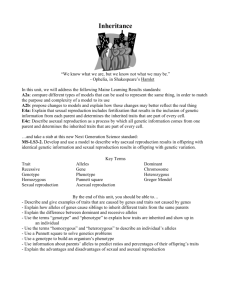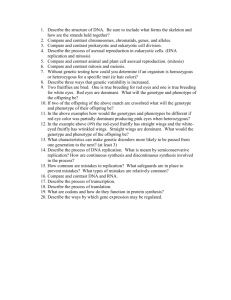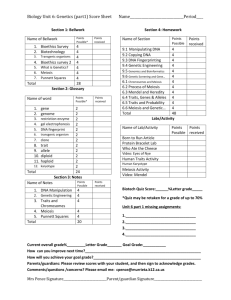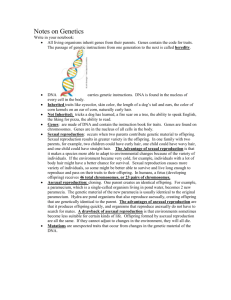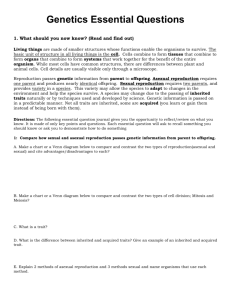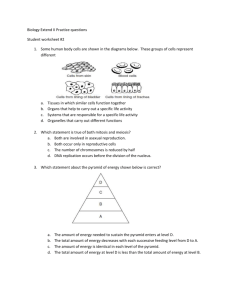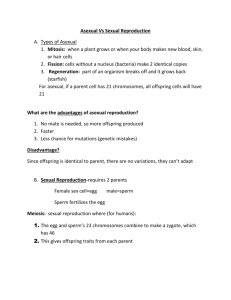Unwrapped Standard 4
advertisement
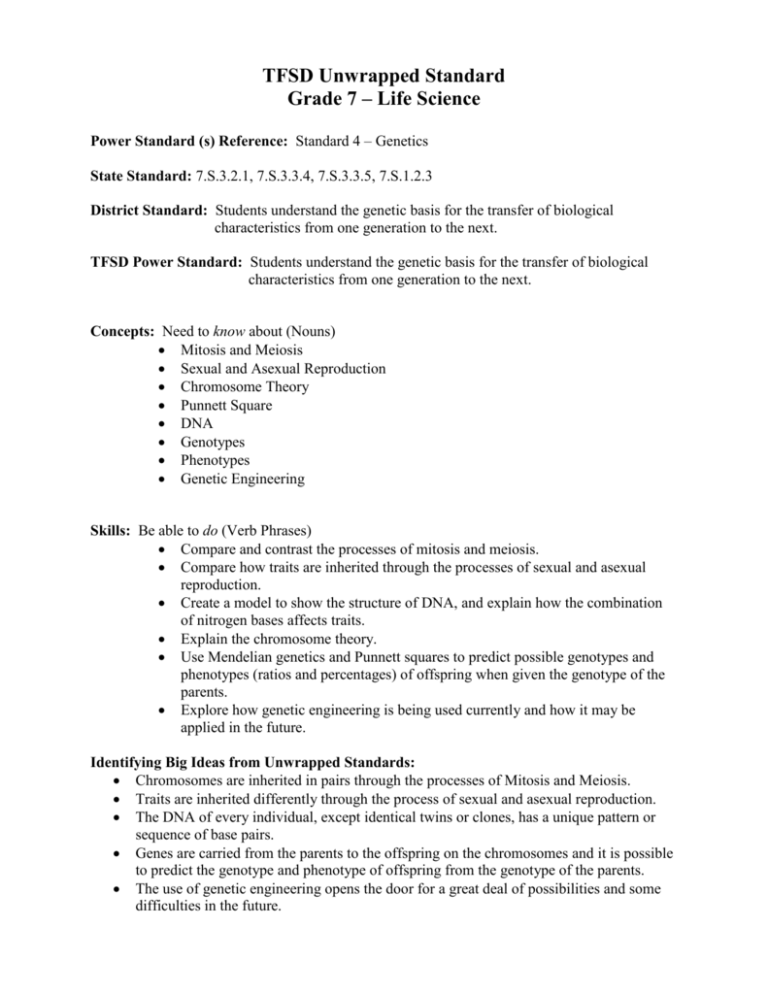
TFSD Unwrapped Standard Grade 7 – Life Science Power Standard (s) Reference: Standard 4 – Genetics State Standard: 7.S.3.2.1, 7.S.3.3.4, 7.S.3.3.5, 7.S.1.2.3 District Standard: Students understand the genetic basis for the transfer of biological characteristics from one generation to the next. TFSD Power Standard: Students understand the genetic basis for the transfer of biological characteristics from one generation to the next. Concepts: Need to know about (Nouns) Mitosis and Meiosis Sexual and Asexual Reproduction Chromosome Theory Punnett Square DNA Genotypes Phenotypes Genetic Engineering Skills: Be able to do (Verb Phrases) Compare and contrast the processes of mitosis and meiosis. Compare how traits are inherited through the processes of sexual and asexual reproduction. Create a model to show the structure of DNA, and explain how the combination of nitrogen bases affects traits. Explain the chromosome theory. Use Mendelian genetics and Punnett squares to predict possible genotypes and phenotypes (ratios and percentages) of offspring when given the genotype of the parents. Explore how genetic engineering is being used currently and how it may be applied in the future. Identifying Big Ideas from Unwrapped Standards: Chromosomes are inherited in pairs through the processes of Mitosis and Meiosis. Traits are inherited differently through the process of sexual and asexual reproduction. The DNA of every individual, except identical twins or clones, has a unique pattern or sequence of base pairs. Genes are carried from the parents to the offspring on the chromosomes and it is possible to predict the genotype and phenotype of offspring from the genotype of the parents. The use of genetic engineering opens the door for a great deal of possibilities and some difficulties in the future. Essential Questions from Big Ideas to Guide Instruction and Assessment: Can you explain how Meiosis is different from Mitosis? How are traits passed from one generation to the next in the processes of sexual and asexual reproduction? How would a change in the sequence of the nitrogen base pairs of DNA affect traits of an organism? Can you determine specific traits of the offspring if you know the genotype of the parents? Can you cite examples of genetic engineering and the effects over time? Possible Topics or Context: (what you will use to teach the concepts and skills-particular unit, lessons or activities)

